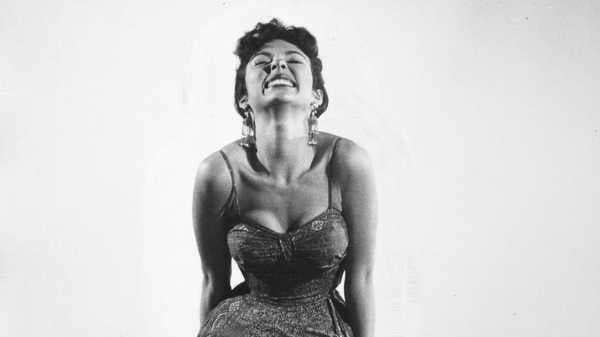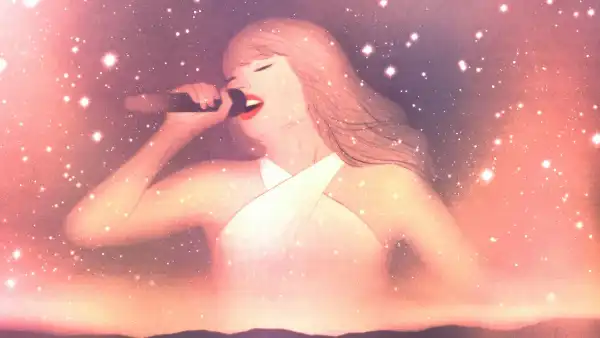
By 1976, the song “Fever,” written by Otis Blackwell and Eddie Cooley, had been subject to all manner of interpretation. Little Willie John recorded it first, in 1956, and two years later Peggy Lee applied her own, lasting gloss—to the point of rewriting most of it. Elvis Presley, James Brown, and (less successfully) the 1969 Chicago Cubs followed.
It was, therefore, not entirely strange for Rita Moreno, who already had collected an Oscar, a Grammy, and a Tony, to find herself on a set in England, accompanied by the crazed drummer of Dr. Teeth and the Electric Mayhem. As Animal—voiced and animated by Frank Oz—thwacked with abandon, Moreno, clad in a slinky dress, seductively crooned about sexual activity for an early episode of a family-oriented variety show called “The Muppet Show.”
Moreno and Jim Henson, who created “The Muppet Show,” met a few years earlier, when he was working on “Sesame Street.” Henson was shooting in New York, near Moreno’s apartment, so naturally she spotted him at a local coffee shop, gave him a hug, professed her love, and told him she would happily do a voice for “your Muppets,” gratis. “He hardly said a word, because I never shut up,” Moreno recalled recently. But, silent or not, Henson was persuaded, and Moreno would appear on “Sesame Street,” where she sang “There’s a Hole in the Bucket.” In that light, the invitation to sing “Fever” in Elstree Studios—nearly a decade after Little Willie John, convicted of second-degree murder, died in Washington State Penitentiary—was not utterly unexpected.
“It was Jim’s idea to do ‘Fever.’ Of course, that appealed to the cartoon side of me. I love silly humor, and that was about as silly as you can get.
“For the first few rehearsals, I would sit in a chair and watch Frank as I sang the song and the bass player played the riff. And I would say, ‘Oh, God. Do that. Do that, Frank, ’cause that is really hilarious.’ He watched my face, too. It gave him a chance to make Animal react in certain ways. Frank and I had worked together on ‘Sesame Street’ when I volunteered to do little-girl voices, because the only way we could do that—since I was not actually working a Muppet—was to watch my face.
“Now, I don’t know how familiar you are with ‘Fever,’ but it has a bass riff. Dum, dum-dum. Dum, dum-dum. Never know how much I love you. But it all sounded the same. So how do you do comedy—going back and forth to the drummer and telling him off—and know when to come in again with your song? And I realized, during rehearsal, that I wouldn’t know what bar was what. You know, the song had to end at a certain time, and the bass is playing the very same riff all the time. Literally for, what, thirty-eight bars? Forty bars? Dum, dum-dum. There was no way to know. So we had somebody make up these big cue cards. The man would stand literally next to the camera and just point to how many bars I had left. I had to memorize where I was. It was just very, very complicated.
“The contrast is outrageous! There’s this sex bomb in front, and this, this creature—I don’t know what else to call him—this fuzzy, violent, nasty creature in back who only got pleasure out of making people and other Muppets unhappy. A creature of impulse, let’s put it that way. And when I watch myself—’cause I’m usually so critical—but when I watch myself, I just laugh at me. What I love about it is that my character’s trying so hard to be sexy and sultry. And this horrible creature in back of me is acting up. [Laughter] See? I can’t stop laughing. It tickles me to death.
“I don’t remember how many takes we did. But we did a lot. Because here’s something else: if I made a mistake during the filming of the piece, we couldn’t go back, because I didn’t know where I was musically. We always had to do it in one take, each time. So if I would make a mistake, or trip slightly, or not be happy with a movement I made with my hands or arms, we would stop and take it all the way back to the beginning. And you don’t do overtime in England, at least at that time. Once six o’clock came around, you are out of that studio.
“The dress was mine; it was a Halston. It was one of those dresses that literally was a huge piece of fabric, and you wrapped it around yourself. It’s a wonderful dress. And that was a wig I wore. I just wanted to look as sexy as possible, because the contrast between that look and Animal had to be as huge as possible. I had to look as sexual and feminine as compared to his scruffiness. I don’t know if you remember, but his teeth were on the outside of his face. What a great invention he was! Oh, my God, I loved that Muppet.
“In Spanish, I said, ‘Listen, you do that one more time, I’m going to boff your head right off.’ And then, in English, I just say, ‘Cool it.’ That was all improvised. When he looks away, I grab his nose and bring his face back to my face, and I say, in Spanish, ‘Look at me when I’m talking to you.’ Grabbing his nose was improvised, too.
“The idea to clap Animal’s face at the end with the cymbals was Jim’s. But the hardest part for me was when Animal said, ‘Ooooooh! That’s my kind of woman!’ Oh, my God. It’s such a funny thing for him to say, and it’s so typical of him. You could see that Animal was very turned on by this woman.
“I got my first Emmy for it, but it didn’t show in my career. You know, once you have a Latino name, you’re sort of fucked. But Frank and Jim loved it. They felt I was a Muppetess.
“When I tell people about it, people who’ve never even heard of it, I get out my phone. I say, ‘You’ve got to see this.’ And I have a huge grin on my face, and my eyebrows shoot up. When I show it to people, I always say, ‘O.K. Before I show this to you, one favor: Do not laugh out loud at the very end. It’s a very funny ending, and, if you laugh out loud, you’ll miss what Animal says.’ Because that’s what happens. People think it’s over when I smash the cymbals on him, and it’s not over because he says, ‘Oh, that’s my kind of woman!,’ which is the absolute gorgeous end to that. You have to hear it.”
Sourse: newyorker.com






